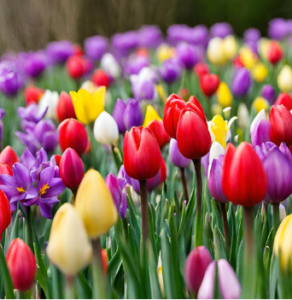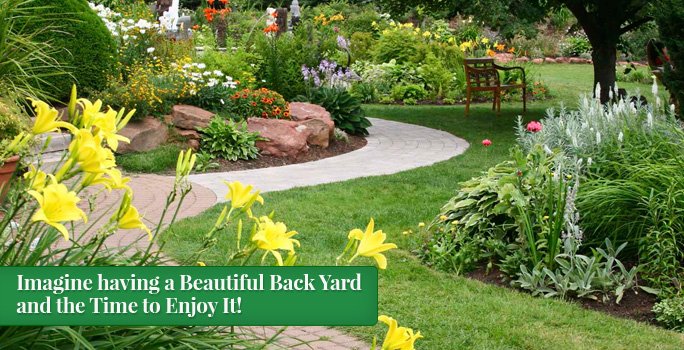
As we enter the season of anticipation and preparation, where nature paints a canvas with vibrant hues, it’s time to think ahead to spring.
Have you planted your spring-flowering bulbs yet? If not, don’t worry; there’s still time to embrace the joys of gardening and ensure your garden bursts into a riot of colors as soon as the last frost melts away.
Planting bulbs allows them to develop strong roots before the harsh grasp of winter. But there’s more to it than digging a hole and dropping in a bulb.
This article will guide you through the process and help you decide which bulbs to choose and how to plant them.
The Early Bird Gets the Bulb
Before diving into the “do’s” and “don’ts” of planting spring bulbs, let’s talk about the importance of timing. The moment you put a bulb in the ground plays a pivotal role in determining when your garden will come to life. So, the first tip of the week is to consider whether you’ve planted your bulbs in time.
Tip of the Week: Planting Bulbs in Autumn
As the days grow shorter and the air becomes crisper, seasoned gardeners know it’s time to think about the beauty that spring will bring. If you haven’t planted your spring bulbs yet, you might be in luck—there’s still time. Planting in the fall gives your bulbs the perfect window to establish their roots before the ground freezes.
With careful planning and consideration, this easy project can bring immense joy and vibrant colors to your garden come spring.
The Do’s and Don’ts of Planting Bulbs
Now that you know the importance of timing, it’s time to delve into the “do’s” and “don’ts” of planting bulbs for a successful spring garden.
- Choose the Right Location
The first step in planting spring bulbs is selecting the perfect location. Bulbs thrive in well-drained soil and plenty of sunlight. Find a spot in your garden that receives at least 6 hours of daylight daily. The right location will ensure your flowers receive the energy they need to bloom beautifully.
- Plan Your Planting Around Bloom Time
Spring bulbs offer a diverse range of bloom times. Daffodils and crocuses are among the early risers, gracing your garden with their colors at the beginning of the season. Tulips, on the other hand, make their grand entrance a bit later. To create a harmonious progression of colors, check with your bulb seller to learn the expected bloom times for each variety and plan your planting accordingly.
- Mix It Up with Variety
While tulips and daffodils are classic choices, consider adding some diversity to your garden with less common options. Early-blooming snowdrops (Galanthus), with their dainty white bells, can create a unique and charming display. Additionally, late-blooming giant allium, resembling oversized ornamental onions with their purple heads on tall stalks, can add a touch of drama to your garden.
- Water After Planting
Once you’ve nestled your bulbs into the soil, please give them a good drink. This initial watering helps the bulbs settle into their new home and establish roots. It’s a crucial step in ensuring their success.
- Do Not Plant Bulbs in Rows
It might be tempting to plant your bulbs in neat rows, but this method can lead to an uninspiring result if some bulbs fail to bloom. Instead, try grouping them in pockets or clusters of 10-12 bulbs. This way, you’ll enjoy a burst of color next spring, even if a few bulbs decide to take a break.
- Do Not: Plant All Bulbs the Same Way
Different bulbs have different spacing requirements. Large bulbs, like tulips and daffodils, should be spaced about 6 inches apart, which means you’ll need around five bulbs per square foot. Smaller bulbs, such as crocus and grape hyacinth or miniature daffodils, can be placed about 4 inches apart, requiring eight small bulbs per square foot of garden area. Ensuring proper spacing is essential to avoid overcrowding and competition for resources.
- Do Not Forget to Fertilize and Top-Dress
To help your bulbs establish strong roots and ensure healthy growth, use a fertilizer high in phosphorous when planting. This essential nutrient aids in root development and encourages robust flowering. After planting, top-dress the beds with shredded wood mulch or mulched leaves to provide insulation, retain moisture, and protect your bulbs during the winter.
The Bulb Planting Process
To give you a deeper look at the bulb planting process, let’s break it down into a few easy steps.
- Choose Your Bulbs: Start by selecting the bulbs you want to plant. Consider your local climate and soil conditions when making your choice.
- Select the Right Spot: Find a location in your garden that receives ample sunlight and has well-drained soil. Prepare the ground by loosening it and adding compost for added nutrients.
- Dig Holes: Dig holes or trenches for your bulbs. The depth of the hole should be approximately three times the bulb’s height. Place large bulbs like tulips and daffodils about 6 inches apart and smaller bulbs like crocus about 4 inches apart.
- Plant the Bulbs: Position each bulb with its pointy end facing up. Cover the bulbs with soil and gently press down to remove air pockets. Water the area thoroughly to help the bulbs settle and initiate root growth.
- Fertilize: As mentioned earlier, use a fertilizer high in phosphorous to aid root development. Apply it when planting.
- Top-Dress: After planting, add a layer of mulch to help insulate the soil and protect the bulbs during the winter months.
Choosing the Right Bulbs
The success of your spring garden largely depends on your bulb selection. Here are some popular spring-flowering bulb varieties to consider:
- Tulips: With their vast array of colors and shapes, tulips are a garden favorite. From classic red and yellow to unique parrot tulips, there’s a tulip for every garden.
- Daffodils: Daffodils, also known as narcissus, are easy to grow and come in various sizes and colors. They’re known for their cheerful yellow and white blossoms.
- Crocuses: These small but charming flowers are among the first to bloom in spring, often pushing through the last remnants of winter’s snow.
- Hyacinths: Hyacinths are known for their fragrant blooms and vibrant colors and make a delightful addition to any garden.
- Alliums: Alliums, including the giant alliums, are unique and attention-grabbing with their globe-shaped purple flowers.
- Snowdrops: Snowdrops are one of the earliest spring flowers to emerge, with delicate white petals that resemble tiny bells.
- Grape Hyacinth: These charming little bulbs produce clusters of small, grape-like flowers, often in shades of blue and purple.
Enhancing Your Garden
To take your bulb planting to the next level, consider the following tips for enhancing your garden’s overall appeal:
- Color Schemes: Plan your bulb planting to create color schemes that complement each other. For example, you could combine pink and white tulips for a romantic theme or mix bright yellow daffodils with deep purple hyacinths for a striking contrast.
- Layering: Experiment with layering different types of bulbs in the same area. Plant larger bulbs deeper and smaller bulbs above them. This technique not only maximizes your space but also creates a visually exciting garden.
- Bulbs in Containers: If you have limited garden space or want to add a pop of color to your patio, consider planting bulbs in containers. Choose decorative pots or boxes and follow the same planting guidelines for the garden.
- Maintenance: Once your bulbs bloom in the spring, remember to deadhead (remove faded flowers) to encourage the plant to put more energy into growing and storing nutrients for the following year. Allow the foliage to die back naturally, as it nourishes the bulbs.
Conclusion: The Promise of Spring
Planting spring bulbs is a rewarding and joyful endeavor, and with the proper knowledge and careful planning, you can look forward to a garden that bursts into life with a tapestry of colors come spring. So, if you still need to plant your bulbs, it’s not too late. Follow the “do’s” and “don’ts” of bulb planting, select the suitable varieties for your region, and prepare to be dazzled by the beauty that nature has in store for you.
Embrace the promise of spring, and let your garden bloom with the vibrant artistry of these flowering bulbs. As you watch the first shoots emerge from the soil and the petals unfurl,
you’ll be grateful for the time and effort you put into planting those bulbs during the crisp, cool autumn days. Spring will arrive, and with it, the assurance that nature’s cycles will continue, bringing life, beauty, and renewal to your garden and spirit.
Click “DO IT FOR ME” to request a FREE quote.

Source: customer-service@bestyard.com in collaboration with Associated Landscape Contractors of Colorado
















